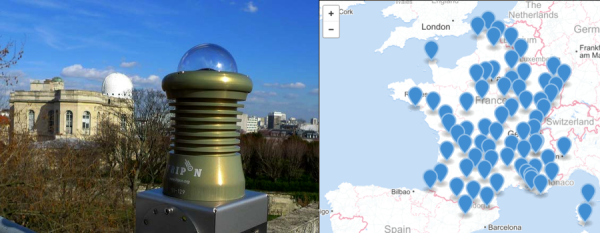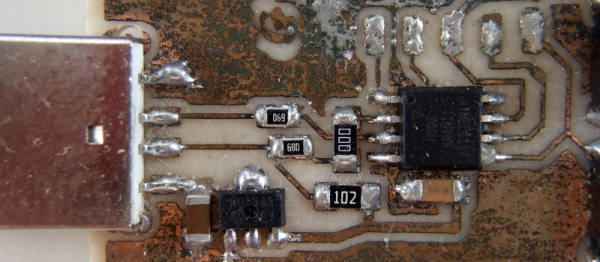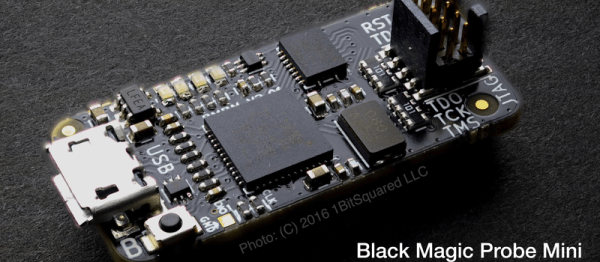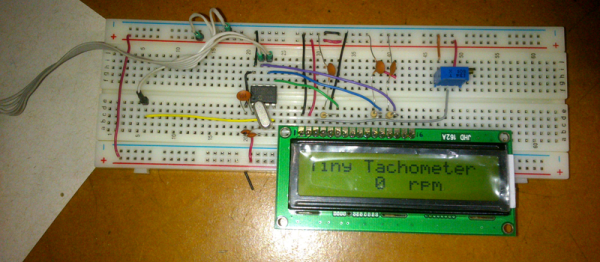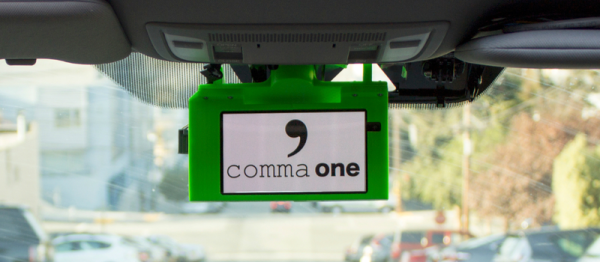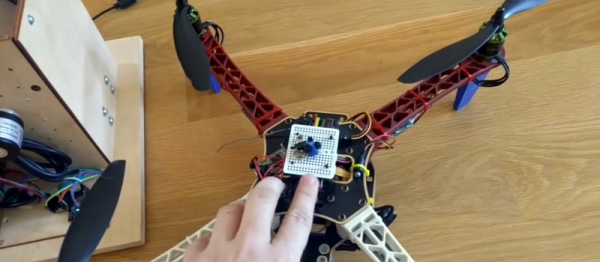Just a few weeks ago, we reported on a US NASA project to track the path and estimate the size of meteoroids in the sky using a distributed network of a handful of cameras. It turns out that there’s a similar French effort, and it’s even cooler: the Fireball Recovery and InterPlanetary Observation Network (FRIPON). (The name is cute, if the acronym is contrived: a “fripon” is a trickster in French.)
Author: Elliot Williams1432 Articles
The Zero Ohm Resistor
What’s your favorite value of resistor? 1K? 10K? They’re all fine, but when you need nearly no resistance at all, nothing beats the good old zero-ohm resistor.
Wait a minute! Resistors are supposed to resist current. What the heck does a zero-ohm resistor do? Well, the short story (tee-hee!) is that it’s like a jumper for single-sided surface-mount boards. In the bad old days, companies used to save money by running single-sided boards, and you could buy wire jumpers to help make the layout that much easier.
Fast forward to the modern era, where there’s not a through-hole component to be seen. What’s the resistance (ideally) of a wire? Zero ohms. And thus the zero-ohm resistor was born. We have a whole spool of them in our closet in 1206, the largest SMD size that we use, in order to be able to sneak two or three tracks underneath, even on a home-etched board. They’re great.
Anyway, what set us off rhapsodizing about the lowest value resistor was this article on the peculiarities of the zero ohm resistor. Of course, nothing has zero resistance, and the article walks you through some of their real-world properties. Enjoy!
Making A Spectrum Analyzer The Wrong Way On An ATtiny85
Everyone’s a critic, but it’s hard to argue with success. And that’s exactly what [agp.cooper] has with his ATtiny85-based spectrum analyzer devices.
The “normal” way to build a spectrum analyzer is to collect a bunch of samples and run a Fast Fourier Transform (FFT) on them all in one shot. As the name implies, the FFT is fast, and the result is the frequency components of the sampled data. [agp.cooper]’s “wrong” way to do it takes the Goertzel algorithm, which is used for detecting the intensity of a particular frequency, and scanning across the frequency range of interest. It’s a lot slower than a single FFT but, importantly for the ATtiny85 that he implements this on, it’s less demanding of the RAM.
Continue reading “Making A Spectrum Analyzer The Wrong Way On An ATtiny85”
Black Magic Probe: The Best ARM JTAG Debugger?
We don’t always JTAG, but when we do, we use a Black Magic Probe. It’s a completely open ARM-chip debugging powerhouse. If you program the small ARM chips and you don’t have a BMP, you need a BMP. Right now, one of the main producers of these little gems is running a Kickstarter where you can get your hands on a nicely made one and/or a 1Bitsy STM32F415-based development board.
Why is the BMP so great? First off, it’s got a JTAG and a UART serial port in one device. You can flash the target, run your code, use the serial port for printf debugging like you know you want to, and then fall back on full-fledged JTAG-plus-GDB when you need to, all in one dongle. It’s just very convenient.
But the BMP’s killer feature is that it runs a GDB server on the probe. It opens up a virtual serial port that you can connect to directly through GDB on your host computer. No need to hassle around with OpenOCD configurations, or to open up a second window to run [texane]’s marvelous st-util. Just run GDB, target extended-remote /dev/ttyACM0 and you’re debugging. As the links above demonstrate, there are many hardware/software pairs that’ll get you up and debugging. But by combining the debug server with the JTAG hardware, the BMP is by far the slickest.
Full disclosure: we use a BMP that we built ourselves, which is to say that we compiled and flashed the firmware into a $4 STLink clone programmer that we had on hand. Breaking the required signals out required a bit of ugly, fiddly soldering, but we enjoy that sort of thing. If you don’t, the early-bird Kickstarter (with cables) looks like a good deal to us.
Craziest Pin-Saving LCD Trick Ever!
We love squeezing every last bit of silicon goodness out of a tiny chip, or at least we delight in seeing it done. Today’s analog/digital hack is one of the sweetest we’ve seen in a while. And it’s also a little bit of a puzzle, so don’t scroll down to the answer until you’ve given the schematic a good think-over.
Geohot’s Comma.ai Self-Driving Code On GitHub
First there was [Geohot]’s lofty goal to build a hacker’s version of the self-driving car. Then came comma.ai and a whole bunch of venture capital. After that, a letter from the Feds and a hasty retreat from the business end of things. The latest development? comma.ai’s openpilot project shows up on GitHub!
If you’ve got either an Acura ILX or Honda Civic 2016 Touring addition, you can start to play around with this technology on your own. Is this a good idea? Are you willing to buy some time on a closed track?
A quick browse through the code gives some clues as to what’s going on here. The board files show just how easy it is to interface with these cars’ driving controls: there’s a bunch of CAN commands and that’s it. There’s some unintentional black comedy, like a (software) crash-handler routine named crash.py.
What’s shocking is that there’s nothing shocking going on. It’s all pretty much straightforward Python with sprinklings of C. Honestly, it looks like something you could get into and start hacking away at pretty quickly. Anyone want to send us an Acura ILX for testing purposes? No promises you’ll get it back in one piece.
If you missed it, read up on our coverage of the rapid rise and faster retreat of comma.ai. But we don’t think the game is over yet: comma.ai is still hiring. Are open source self-driving cars in our future? That would be fantastic!
Via Endagadget. Thanks for the tip, [FaultyWarrior]!
Lighthouse Locates Drone; Achieves Autonomous Battery Swap
The HTC Vive’s Lighthouse localization system is one of the cleverest things we’ve seen in a while. It uses a synchronization flash followed by a swept beam to tell any device that can see the lights exactly where it is in space. Of course, the device has to understand the signals to figure it out.
[Alex Shtuchkin] built a very well documented device that can use these signals to localize itself in your room. For now, the Lighthouse stations are still fairly expensive, but the per-device hardware requirements are quite reasonable. [Alex] has the costs down around ten dollars plus the cost of a microcontroller if your project doesn’t already include one. Indeed, his proof-of-concept is basically a breadboard, three photodiodes, op-amps, and some code.
His demo is awesome! Check it out in the video below. He uses it to teach a quadcopter to land itself back on a charging platform, and it’s able to get there with what looks like a few centimeters of play in any direction — more than good enough to land in the 3D-printed plastic landing thingy. That fixture has a rotating drum that swaps out the battery automatically, readying the drone for another flight.
If this is just the tip of the iceberg of upcoming Lighthouse hacks, we can’t wait!
Continue reading “Lighthouse Locates Drone; Achieves Autonomous Battery Swap”

